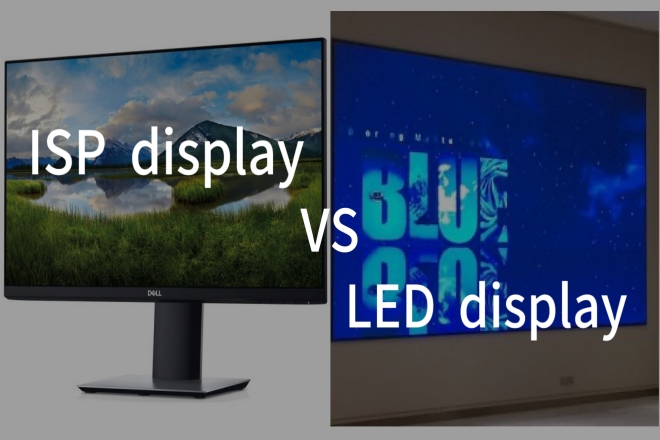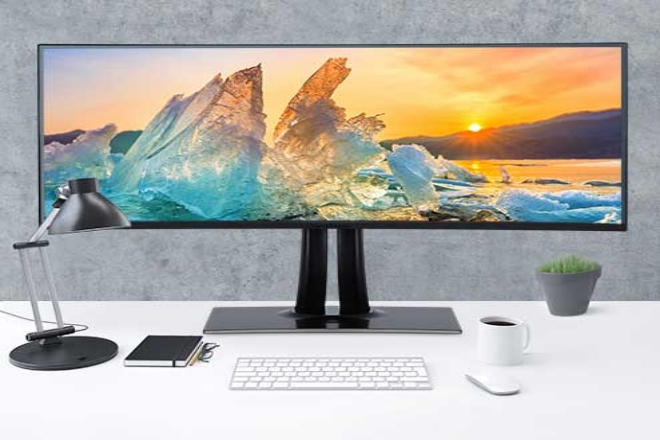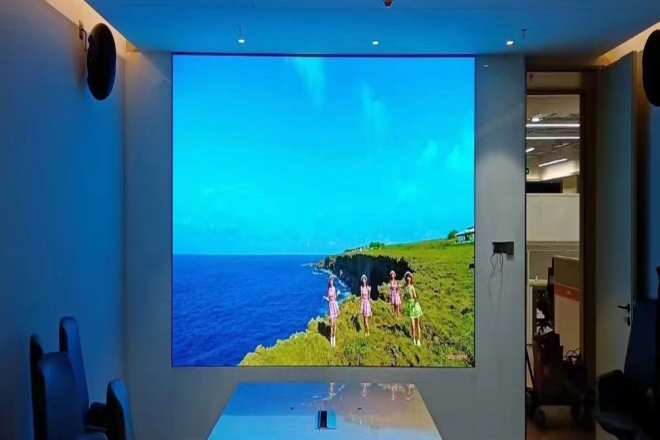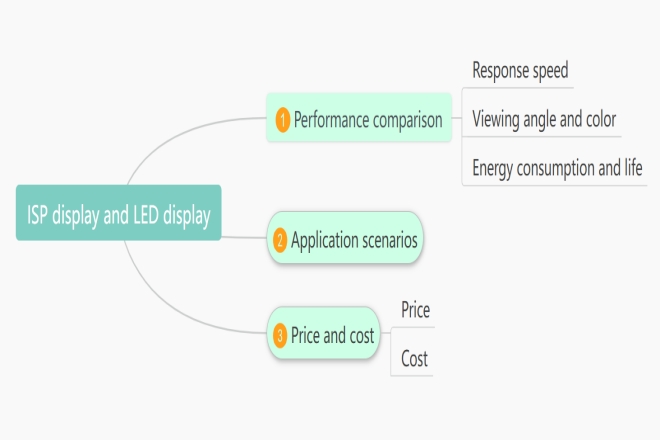介绍

在信息爆炸的时代,显示器不仅是数据的窗口,更是我们感知世界的桥梁。面对市面上琳琅满目的显示技术,你是否曾犹豫过该如何选择?
作为两大热门选择,ISP 又展现出怎样的独特魅力? LED显示屏 ISP和LED显示屏各有什么特点?又能如何满足你的不同需求?本文将带你直接走进这两个世界,深度解析ISP与LED显示屏的核心优势、应用场景、选型要点,让你在短时间内掌握关键信息,做出最适合自己的选择。
无论您是追求极致视觉体验的消费者,还是寻求高效沟通解决方案的商家,本文都将为您提供宝贵的参考和启发。
1.ISP显示简介

很久以前人们就发现传统的LCD屏幕从侧面观看时会变色或者变暗,但IPS技术解决了这个问题。
它使得屏幕无论从哪个角度观看,颜色都基本一致,非常强大,现在很多高端的电脑、手机、电视都采用的是IPS显示屏。
ISP显示,其实就是大家常听到的“IPS显示”,这是日立公司研发的一种特殊的液晶显示技术,你可以把它看成是一种让画面呈现效果更好的高端液晶屏。
1). 主要特点
响应速度快:玩游戏、看视频时,画面切换非常迅速,几乎没有延迟。
宽的 可视角度:与朋友一起观看屏幕时,无论坐在哪里,看到的画面都是一样的,没有色差或暗淡。
颜色好:颜色非常鲜艳,自然,就像亲眼看到的一样。
触感稳定:如果您的手机或平板电脑具有 IPS 屏幕,则触摸起来会很顺滑,不会出现任何模糊或闪烁。
节能:IPS屏幕虽然画质不错,但是也很省电,不用担心电池很快没电。
2). 优缺点分析
2.1).优点:
玩游戏和看视频非常流畅。
当大家一起观看屏幕的时候,画面依然很美丽。
颜色很漂亮,看上去很舒服。
摸起来感觉非常光滑。
使用起来相当省电。
2.2).缺点:
在显示深色的时候可能会有点灰,不像有些技术那么暗。
当对比度较高时,它可能不如其他屏幕那么亮。
有时候,屏幕边缘可能会漏出一点光,不过这种情况现在越来越不常见了。
2.LED显示屏简介

LED显示屏是由许多小的发光二极管(我们称之为LED)组成的屏幕。这些LED可以发出不同颜色的光,组合起来可以显示图片、文字或视频。
每个LED就像一个小灯泡,但它更神奇,可以发出红、绿、蓝三种颜色的光。通过控制这些颜色的亮度,我们就能混合出我们看到的各种颜色。屏幕上有很多个这样的LED,每个都可以独立控制,因此可以显示丰富多彩的图像和视频。
1). 主要特点
超亮:LED显示屏亮度非常高,即使白天阳光很强的情况下,也能看得清,非常适合户外广告牌。
清晰度高:屏幕像素点多,所以显示的图像和视频非常清晰,细节看得清清楚楚。
省电:LED显示屏比传统显示屏更省电,耗电量更少,但效果却一样好甚至更好。
寿命长:LED灯珠非常耐用,不易坏,所以如果你使用LED显示屏的话,就不用频繁换灯泡了,省钱又省心。
2). 优缺点分析
2.1).优点:
超亮:无论白天还是晚上,都可以看得清楚。
高清晰度:图像和视频都非常清晰。
节能:节能环保,有利于地球。
寿命长:坚固耐用,无需频繁更换新品。
用途广泛:可放置在室内或室外,可在很多地方使用。
2.2).缺点:
颜色可能不准确:如果设置不好,颜色可能会有点偏差。
色温问题:如果色温调节不好,图像会看起来很奇怪。
价格有点高:不过从长远来看,其实还是很划算的,省电又耐用。
3、ISP显示屏与LED显示屏对比分析

1). 性能对比
1.1). 响应速度:
- ISP 屏幕:
通常具有较快的响应速度,适合显示动态画面,如游戏、视频等,可以减少画面拖影的现象,提供更流畅的视觉体验。
- LED屏幕:
虽然LED屏幕在背光技术、显示效果等方面有其优势,但是响应速度并不直接取决于LED技术本身,而是与屏幕的整体设计和驱动技术有关。
不过LED显示屏在刷新率、响应时间方面也有不俗的表现,尤其是高端产品,可以满足快速变化的画面需求,不过在一些动态场景下和IPS相比,可能会略有差别。
1.2). 可视角度与颜色:
- ISP 屏幕:
其可视角度更广,通常接近180度,在各个方向都能保持良好的色彩和亮度一致性,同时IPS屏幕的色彩还原度高,能呈现出更加真实自然的色彩。
- LED屏幕:
虽然LED显示屏在色彩鲜艳度和亮度方面表现良好,但如果色彩管理不善,在高亮度下可能会出现色彩失真的情况。
另外,传统LED显示屏的视角可能没有IPS屏幕那么广,但在现代技术的推动下,这种差距正在逐渐缩小。
1.3).能耗与寿命:
- LED屏幕:
在能耗方面,LED显示屏具有明显的优势,由于LED光源效率高,相同亮度下LED显示屏耗电量远低于传统显示技术。
同时LED光源的长寿命可大幅降低更换和维护成本。
- ISP 屏幕:
虽然IPS屏幕在能耗、寿命等方面具有一定的优势,但相比LED显示屏可能略显不足,不过随着技术的进步,IPS屏幕在能耗、寿命等方面也在不断优化。
2). 应用场景
- ISP 屏幕:
ISP屏由于其色彩真实、视角广、响应速度快等特点,非常适合对色彩、视角、响应时间要求较高的场合。
例如图书馆、教室、监控室等需要长时间观看、对显示效果要求较高的场所。
- LED屏幕:
LED显示屏因其高亮度、高对比度、适应性广等特点,被广泛应用于户外广告、宣传展示、大型活动现场等,LED显示屏在强光下仍能保持清晰的显示效果,不受环境光的影响。
3). 价格与成本
3.1). 价格:
- LED屏幕:
由于LED显示屏的制作工艺复杂,需要高品质的LED光源和驱动技术,所以它的价格相对较高。
但随着生产规模的扩大和技术的成熟,LED显示屏的价格也在逐步下降。
- ISP 屏幕:
相较于LED显示屏,ISP屏的生产成本可能会略低一些,所以在价格上可能有一定的优势。但这也要看具体产品的规格和品质。
3.2). 费用:
从长远来看,虽然LED显示屏初期投入可能较高,但其低功耗、长寿命的特点可以大幅降低总体使用成本。
LED光源的长使用寿命减少了更换频率和维护成本;同时,低能耗也降低了运营成本。
对于ISP屏来说,虽然其价格可能相对较低,但是在能耗、寿命等方面可能比LED显示屏略逊一筹。
因此在长期使用过程中,它们的综合成本可能会受到一定影响,但这也取决于具体的使用场景和需求。
结论
综上所述,ISP显示屏与LED显示屏各有优势,在不同的应用场景中展现出独特的魅力和价值。
ISP显示屏以其出色的视觉体验、稳定的运行性能为追求高品质显示效果的用户提供了理想的选择,而LED显示屏以其高亮度、高清晰度、环境适应性强等特点在户外广告、大型活动等领域发挥着不可替代的作用。
最后,如果你想了解更多关于LED显示屏的信息, 请与我们联系。
